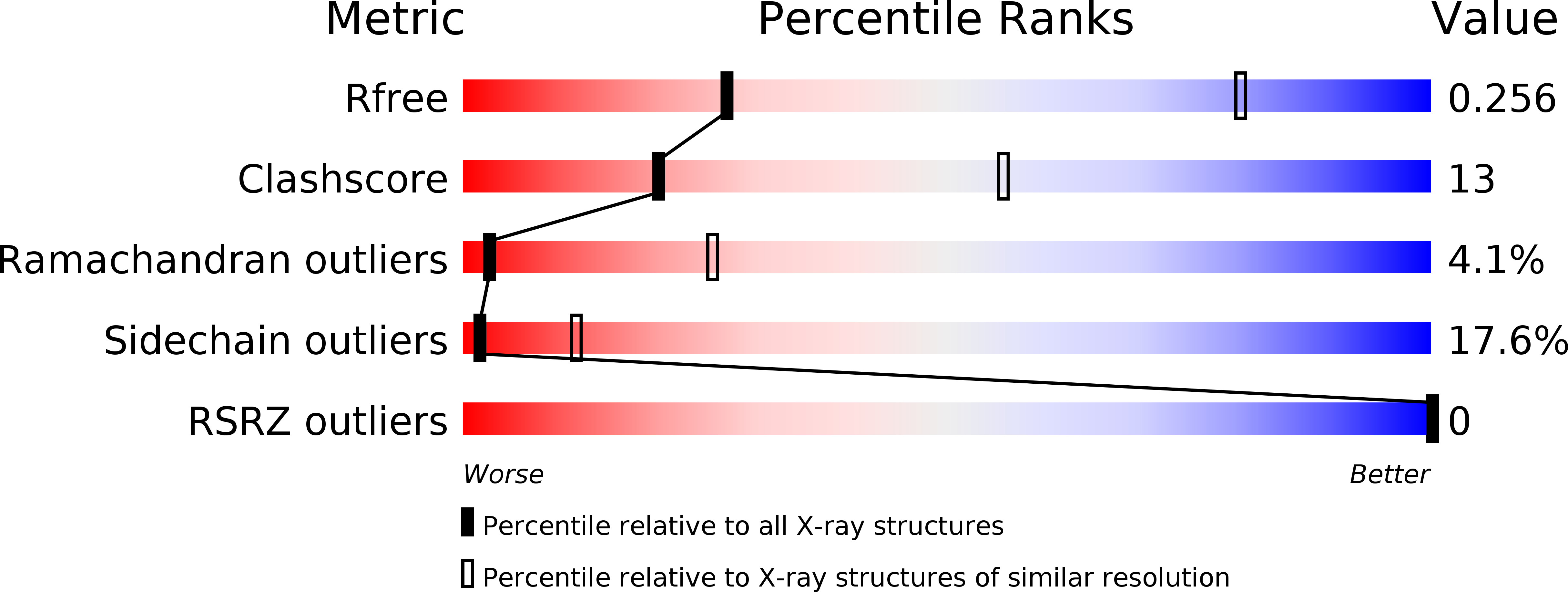Mechanism of substrate specificity of phosphatidylinositol phosphate kinases.
Muftuoglu, Y., Xue, Y., Gao, X., Wu, D., Ha, Y.(2016) Proc Natl Acad Sci U S A 113: 8711-8716
- PubMed: 27439870
- DOI: https://doi.org/10.1073/pnas.1522112113
- Primary Citation of Related Structures:
5E3S, 5E3T, 5E3U - PubMed Abstract:
The phosphatidylinositol phosphate kinase (PIPK) family of enzymes is primarily responsible for converting singly phosphorylated phosphatidylinositol derivatives to phosphatidylinositol bisphosphates. As such, these kinases are central to many signaling and membrane trafficking processes in the eukaryotic cell. The three types of phosphatidylinositol phosphate kinases are homologous in sequence but differ in catalytic activities and biological functions. Type I and type II kinases generate phosphatidylinositol 4,5-bisphosphate from phosphatidylinositol 4-phosphate and phosphatidylinositol 5-phosphate, respectively, whereas the type III kinase produces phosphatidylinositol 3,5-bisphosphate from phosphatidylinositol 3-phosphate. Based on crystallographic analysis of the zebrafish type I kinase PIP5Kα, we identified a structural motif unique to the kinase family that serves to recognize the monophosphate on the substrate. Our data indicate that the complex pattern of substrate recognition and phosphorylation results from the interplay between the monophosphate binding site and the specificity loop: the specificity loop functions to recognize different orientations of the inositol ring, whereas residues flanking the phosphate binding Arg244 determine whether phosphatidylinositol 3-phosphate is exclusively bound and phosphorylated at the 5-position. This work provides a thorough picture of how PIPKs achieve their exquisite substrate specificity.
Organizational Affiliation:
Department of Pharmacology, Yale School of Medicine, New Haven, CT 06520;

















